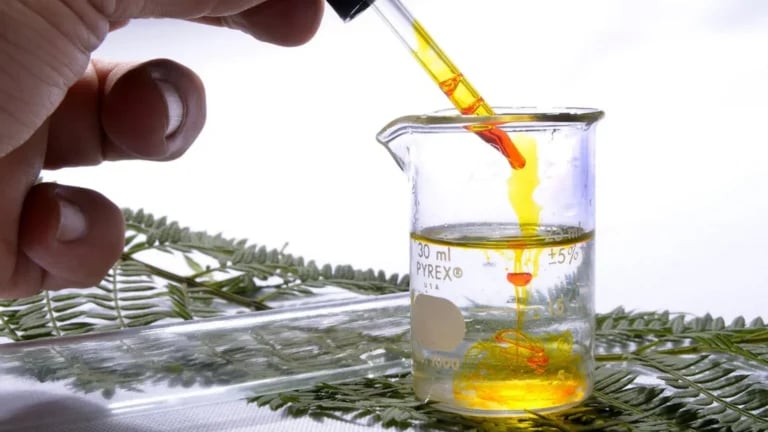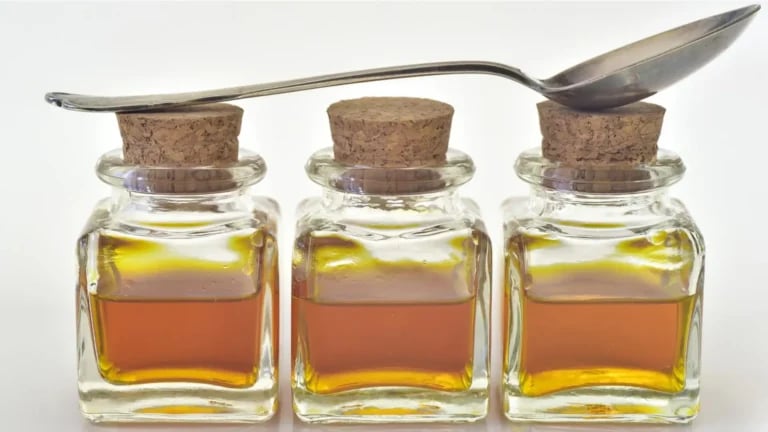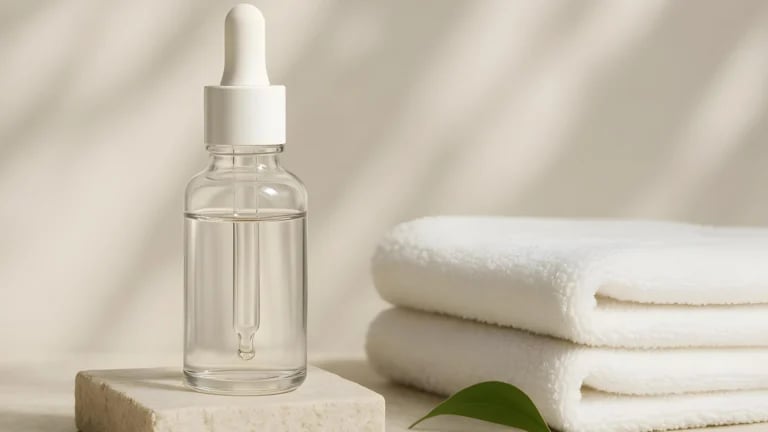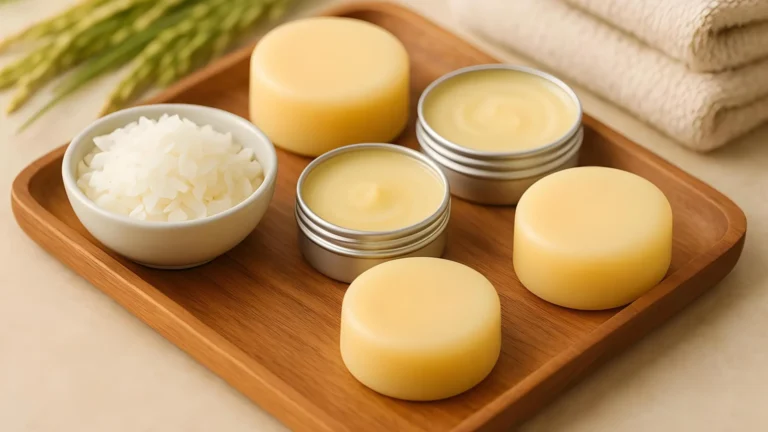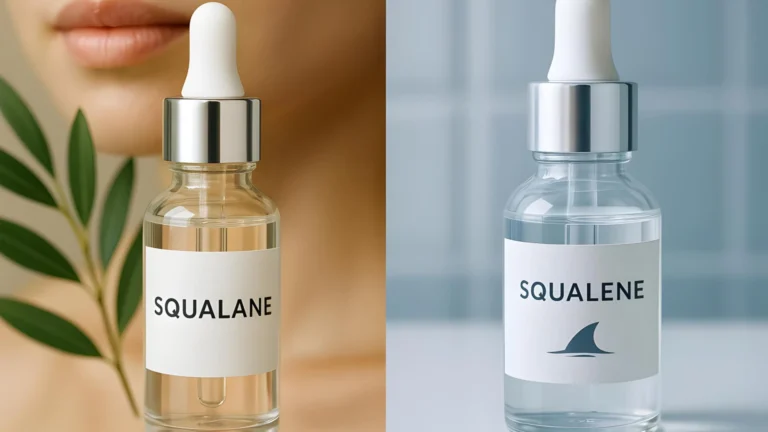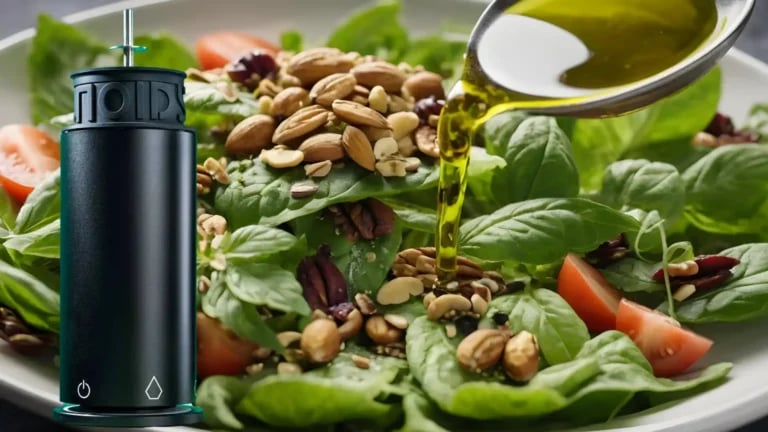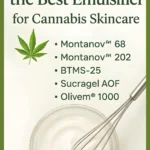I’m a professional cosmetic formulator who’s obsessed with combining cannabis and cosmetics. Making effective cannabis creams, lotions, or balms can be a challenge, especially when it comes to keeping the emulsion stable. If you skip the emulsifier, you’ll end up with a big mess and wasted ingredients.
Here’s a no-nonsense guide to picking the right emulsifier for your cannabis skincare. We’ll look at what works, what doesn’t, and what to watch out for.
Table of Contents
Why Emulsifiers Matter in Cannabis Skincare
A good emulsifier lets you blend cannabis oils and water so every batch stays creamy and stable. It’s not just about texture. Picking the right emulsifier makes sure your cannabinoids and other active ingredients are mixed well, so every time you use it, it works like it should.
How Cosmetic Emulsifiers Work
Emulsifiers are molecules with a water-loving side and an oil-loving side. Whisk them in, and they form tiny structures that trap oil and water together. That’s how you get a proper cream or lotion, instead of a pot of split liquid.
Choosing the Right Emulsifier for Cannabis Skincare
Not all emulsifiers play nicely with cannabis or CBD oil. You’ll want something that’s mild, works at the right temperature, and gives a nice skin feel. Think about:
- Whether you want a light, absorbing product or a thicker barrier cream.
- Which oils are you using – Hemp, MCT, Olive, Castor, and so on.
- Whether you want a cream, a lotion, or something in between.
- Natural or synthetic – natural is usually preferred for handmade skincare.
- Oil-in-Water (O/W) or Water-in-Oil (W/O)
Types of Cosmetic Emulsifiers
Emulsifiers are either hydrophilic (water-loving, for oil-in-water emulsions) or lipophilic (oil-loving, for water-in-oil emulsions). Oil-in-water emulsions are most popular for skincare because they give a light and non-greasy feel. They are just right for lotions and face creams. Water-in-oil emulsions are used for thicker, richer products like night creams and barrier balms.
Natural vs Synthetic Emulsifiers
This is where it gets confusing. Even so-called natural emulsifiers like lecithin can struggle with stability and do not always work well with cannabis extracts or high oil content. Many plant-based emulsifiers are made in the lab but still count as natural or vegan for cosmetics. Look for COSMOS Approved on labels if you want reassurance about how an emulsifier is made.
One mistake I see a lot is people thinking beeswax is an emulsifier. It is not. If you try to make a cream with oil, water, and beeswax, it will split and can cause problems with preservation and stability.
Emulsification Challenges with Cannabis
Cannabis extracts can make things tricky. They might throw off the preservative system, split the emulsion, or cause odd colours and smells. Cannabinoids, whether sativa, indica, or ruderalis, can interact with other cosmetic ingredients and destabilise your blend. Stability is the main hurdle, and even changes in pH can make a cannabis cream split or separate.
To maintain stability, I may need to add a little Xanthan Gum or Konjac Glucomannan, but selecting the right emulsifier is essential.

Top 5 Emulsifiers for Cannabis Skincare
Here are the five emulsifiers I use and recommend for cannabis skincare. They are reliable, widely available, and feel great on the skin.
Montanov™ 68
Montanov™ 68 is a plant-based emulsifier, perfect for natural creams and lotions. It gives a rich, creamy texture without heaviness. Works especially well with cannabis-infused oil and CBD isolate, holding everything together so your cream stays stable over time. Good for both face and body creams, especially if you want a luxurious feel.
*As an Amazon Associate, I earn from qualifying purchases.
Montanov™ 202
Great for light, fluid emulsions. Montanov™ 202 is ideal for fast-absorbing lotions and refreshing “milk” formulations. It is ideal for cannabis skincare, working with a wide range of oils and keeping the texture light. Suits day creams and summer lotions.
*As an Amazon Associate, I earn from qualifying purchases.
BTMS-25
BTMS-25 is a mild conditioning emulsifier that gives a soft, silky finish. It’s often used in haircare but is also great for lightweight body lotions and creams. Works well with cannabis extracts and helps formulas glide onto the skin. Leaves a conditioned, non-sticky feel that people love in lotions.
*As an Amazon Associate, I earn from qualifying purchases.
Sucragel AOF
A clever, sugar-based emulsifier that turns oils into clear, rinseable gels. Sucragel AOF is a favourite for making cannabis cleansing oils and oil-to-milk gels. Great for face cleansers or makeup removers with Cannabis-infused Castor oil. Gives a gentle cleanse without stripping the skin.
*As an Amazon Associate, I earn from qualifying purchases.
Olivem® 1000
Olivem® 1000 is made from olives and creates smooth, gentle creams. It is kind to sensitive skin and works well with cannabis extracts, giving a rich but easily absorbed feel. Ideal if you want to keep things very natural and still effective. It’s also beginner-friendly, making it a solid choice for DIY skincare.
*As an Amazon Associate, I earn from qualifying purchases.
Conclusion
People are really looking for skincare products that use cannabis and hemp, and having the right emulsifier is crucial to create products that actually work and feel nice on the skin. I’ve picked these six because they’re easy to find, easy to use, and give great results. You can use them for all sorts of skincare, not just cannabis blends. Once you get comfortable with them, you’ll come back to them time and again. Remember that they also make great skin care products, even if you are not using cannabis.
FAQ
Can I use beeswax as an emulsifier in cannabis creams?
No. Beeswax is not an emulsifier and will not keep oil and water together. Your cream will sweat and won’t be safe or stable.
Which emulsifier is best for beginners?
Olivem 1000 is the most forgiving if you’re just starting out. It’s easy to work with and gives a nice, stable cream.
Do emulsifiers affect the strength of my cannabis extract?
Not if you keep the temperatures sensible and follow a proper process. The right emulsifier will not reduce the potency of your cannabinoids.
Are all emulsifiers vegan and natural?
No. Some, like Olivem 1000 and Montanov 68, are plant-based and vegan. Others, like BTMS-25, are synthetic but still mild and skin-safe. Always check the label if this matters to you.
Why did my cannabis cream split after a few days?
Usually it’s because the emulsifier wasn’t strong enough, the ratios were off, or the temperature was too high or too low. Cannabis extracts can be tricky, so follow tested recipes and don’t rush the process.
Can I use these emulsifiers for products without cannabis?
Yes. Every emulsifier listed here works just as well in regular skincare, so you can use them for non-cannabis formulas too.
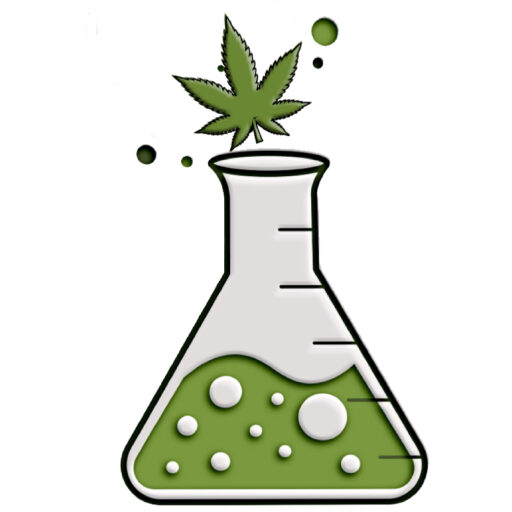
If you liked this blog post, I would love it if you shared it with a friend.
If you use Pinterest, please pin this post.
*As a POT by NOIDS affiliate, I earn from qualifying purchases.
*As an Amazon Associate, I earn from qualifying purchases.

